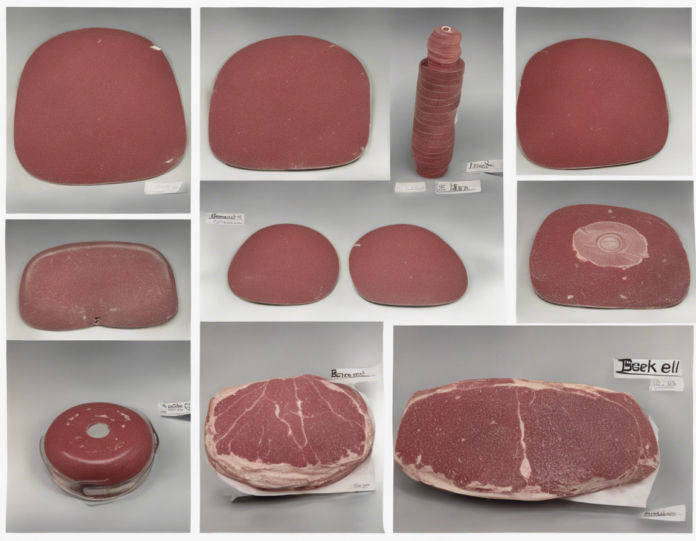Introduction
What is Berkel Strain?
The Berkel strain is a popular cannabis strain known for its potent effects and unique flavor profile. This hybrid strain is a cross between the famous Cherry Pie and Sunset Sherbet strains, resulting in a well-balanced and flavorful cannabis experience. Berkel strain is cherished by cannabis enthusiasts for its calming and euphoric effects, making it a favorite for both recreational and medicinal users.
Growing Berkel Strain
1. Climate and Environment
The Berkel strain thrives in a Mediterranean climate, but it can also be grown indoors or in a greenhouse with proper temperature and humidity controls. The ideal temperature range for growing Berkel is between 68-78 degrees Fahrenheit, with a humidity level of 40-50%.
2. Soil and Nutrients
When growing Berkel strain, it’s essential to use high-quality soil that is well-draining and nutrient-rich. A mix of organic compost, perlite, and coco coir can provide the Berkel plants with the necessary nutrients for healthy growth. Additionally, using a balanced fertilizer rich in nitrogen, phosphorus, and potassium can promote robust growth and high yields.
3. Lighting and Watering
Proper lighting is crucial for the growth of Berkel strain plants. If growing indoors, using full-spectrum LED lights can mimic natural sunlight and promote healthy growth. When it comes to watering, it’s essential to maintain a consistent watering schedule, allowing the soil to dry out between watering to prevent overwatering and root rot.
4. Pruning and Training
To maximize yields and promote airflow, regular pruning and training of Berkel plants are recommended. Topping and LST (Low-Stress Training) techniques can help control the plant’s height and encourage lateral growth, leading to higher yields and better bud development.
Harvesting Berkel Strain
1. Flowering Time
The Berkel strain has a flowering time of around 8-10 weeks, depending on the growing conditions and phenotype. As the plants reach maturity, the buds will develop a sticky resin coating and emit a pungent aroma, indicating that they are ready for harvest.
2. Trimming and Drying
Once the Berkel plants are ready for harvest, it’s essential to trim the buds carefully to remove excess leaves and stems. Hang the trimmed buds in a dark and well-ventilated room to dry slowly for 7-10 days, ensuring proper humidity levels to prevent mold growth.
3. Curing
After the buds have dried, curing them in glass jars is essential to enhance their flavor and potency. Burp the jars daily for the first two weeks to release excess moisture and promote a slow cure process. Curing Berkel buds for 4-6 weeks will result in a smoother smoke and a more potent high.
Benefits of Berkel Strain
1. Pain Relief
The Berkel strain is known for its potent analgesic properties, making it an ideal choice for individuals seeking relief from chronic pain conditions such as arthritis, migraines, and muscle spasms.
2. Stress and Anxiety
The calming and mood-boosting effects of Berkel strain make it an excellent choice for managing stress, anxiety, and depression. The euphoric high can uplift the mood and promote relaxation without the sedative effects of some other strains.
3. Appetite Stimulation
For individuals struggling with appetite loss or nausea, Berkel strain can help stimulate the appetite and alleviate gastrointestinal discomfort, making it a popular choice for cancer patients undergoing chemotherapy.
FAQs (Frequently Asked Questions)
1. How difficult is it to grow Berkel strain?
Growing Berkel strain can be moderately challenging, requiring attention to detail and proper environmental controls. With the right knowledge and care, even novice growers can achieve successful harvests.
2. What is the typical THC content of Berkel strain?
The Berkel strain typically has a THC content ranging from 18% to 24%, making it a moderately potent strain favored by experienced cannabis users.
3. Can Berkel strain be grown outdoors?
While Berkel strain thrives in a controlled indoor environment, it can also be grown outdoors in regions with a warm and dry climate similar to the Mediterranean.
4. How can I improve the flavor profile of Berkel strain buds?
To enhance the flavor profile of Berkel buds, proper curing is essential. Allowing the buds to cure slowly in glass jars can bring out the full spectrum of flavors and aromas.
5. Is Berkel strain suitable for evening or daytime use?
Berkel strain is a versatile hybrid that can be enjoyed both during the day and at night, depending on the individual’s tolerance and desired effects. Its balanced high makes it suitable for various occasions.
6. Are there any potential side effects of consuming Berkel strain?
While Berkel strain is well-tolerated by most users, common side effects may include dry mouth, dry eyes, and dizziness, especially when consumed in high doses. It’s essential to start with a low dose and pace consumption accordingly.
7. Can I use Berkel strain for medical purposes?
Berkel strain is often used for medicinal purposes due to its analgesic, anxiolytic, and appetite-stimulating effects. It can help alleviate symptoms associated with chronic pain, anxiety, depression, and appetite loss.
8. How can I store Berkel strain buds for long-term freshness?
To ensure the long-term freshness of Berkel buds, store them in airtight containers in a cool, dark place away from light, heat, and humidity. Proper storage can preserve the potency and flavor of the buds for an extended period.
9. Can I make concentrates or edibles with Berkel strain?
Berkel strain can be used to make concentrates such as shatter, wax, or oils, as well as edibles like baked goods, gummies, or tinctures. Proper decarboxylation of the cannabis material is essential before incorporating it into recipes.
10. How can I differentiate between different phenotypes of Berkel strain?
Each Berkel strain phenotype may exhibit slight variations in aroma, flavor, and appearance. Pay attention to subtle differences in bud structure, color, and fragrance to identify unique characteristics of each phenotype and choose the one that suits your preferences.

